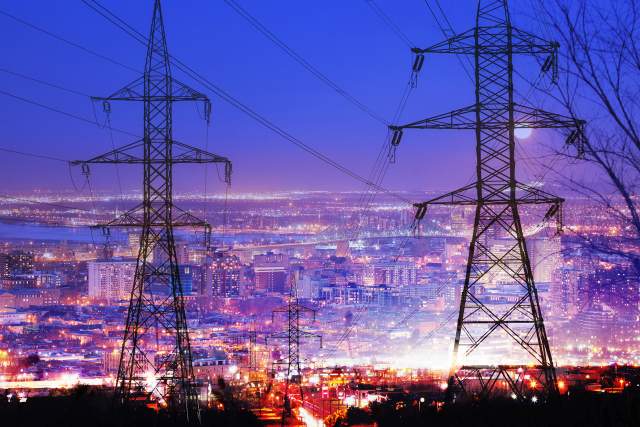If you fill it up today, the government wants you to plug it in tomorrow.

Erin Mansur is dean for faculty and research and the Revers Professor of Business Administration at Tuck. Mansur’s research and teaching focus on energy economics and the nuances of energy transition.
To reduce carbon dioxide emissions from burning fossil fuels, Congress in 2021 and 2022 enacted a host of laws designed to turbocharge the transition to electric vehicles and heat pumps. Manufacturers and consumers have followed along, taking advantage of healthy financial incentives to scale up EV production and trade in their gas guzzling cars and furnaces for so-called “zero emission” alternatives. The hope is that renewables like solar and wind power can feed this increased demand for electricity, but the reality isn’t as rosy. These days, when we ask for more power from the grid, it’s usually coming from dirty sources, such as coal. Energy economist Erin Mansur, the Revers Professor of Business Administration at Tuck, has been researching the nuances of this energy transition for more than ten years. With a deep interest in environmental policy and transparency, he uses publicly available data and innovative methodologies to describe the conditions in energy markets, quantify the tradeoffs, and give policy makers the tools to make smart decisions that will make our economy cleaner and more sustainable.
Below, we summarize just a few of the published and working papers Mansur and his coauthors have written in this area.
How Clean is Your EV? It Depends.
Mansur’s first foray into the carbon implications of electrification is his 2014 paper “Spatial and Temporal Heterogeneity of Marginal Emissions: Implications for Electric Cars and Other Electricity Shifting Policies,” which was published in the Journal of Economic Behavior and Organization.
The term “marginal emissions” is important here and in later papers. It refers to the emissions that result from the extra demand on the electrical grid when someone chooses to consume more, such as charging an EV. To estimate these marginal emissions, Mansur accounts for how electricity is generated in different regions of the U.S. and at different times of day. He finds substantial variation in these effects; some areas predominantly use coal and natural gas, while others use less carbon-intensive sources to meet additional consumption.
When applied to EVs, this variation produces some stark differences in marginal emissions from, say, a Tesla in California versus one in Michigan. “The carbon dioxide emissions per mile from driving EVs are less than those from driving a hybrid car in the western United States and Texas,” they write. “In the upper Midwest, however, charging during the recommended hours at night implies that EVs generate more emissions per mile than the average car currently on the road.”
What do Marginal Emissions Mean for Climate Policy?
A central component of the Biden Administration’s climate change policy is to have EVs make up 50 percent of new vehicle purchases by 2030. Using updated data on marginal emissions from power plants, Mansur and his coauthors estimated the effect this vehicle transition would have on average and marginal emissions in the years ahead.
In a paper titled “Why marginal CO2 emissions are not decreasing for US electricity: Estimates and implications for climate policy,” published in 2022 in The Proceedings of the National Academy of Sciences, Mansur and his coauthors come to a concerning conclusion. Even though average emissions have gone down in the past decade, marginal emissions have increased. This is because changes in electrical demand are more often being served by coal plants while gas plants now provide cheaper baseload power.
We find that the promise of EVs for reducing emissions depends, to a large degree, on complementary policies that decarbonize both average and marginal emissions in the electricity sector.
— Erin Mansur, Revers Professor of Business Administration
“Overall, we find that the promise of EVs for reducing emissions depends, to a large degree, on complementary policies that decarbonize both average and marginal emissions in the electricity sector,” they write.
Doing the Math for the DOE
The Infrastructure Investment and Jobs Act, signed into law by President Biden in November of 2021, requires various federal agencies to measure and publish marginal emissions across the U.S. grid. This mandate is critical not only to environmental policymaking but also to the private sector’s efforts to report or reduce the environmental effects of their electricity consumption.
The problem is, it’s a complicated task, and the agencies haven’t yet figured it out. In effect, you must pinpoint the location and type of every generator across the country and calculate the chance that it will respond to an increased load, wherever it may be. “You have to do these measurements by location for every hour,” Mansur says, “and it’s very hard to correctly account for [electricity] trade across these different regions.”
In a 2024 National Bureau of Economic Research working paper titled “Regularization from Economic Constraints: A New Estimator for Marginal Emissions,” Mansur and coauthors Stephen Holland, Valentin Verdier, and Andrew Yates step up to solve that problem. To do so, they innovate an econometric method that uses machine learning. While prior approaches used models with many assumptions, the coauthors’ new method calculates what happens in reality. “We don’t want to assume behavior,” Mansur says. “We want to go with what people actually do.” Accounting for regional trade has a large effect in markets that depend on significant imports, like New England.
This story originally appeared in print in the Summer 2024 issue of Tuck Today magazine.

